New Zealand flax brings texture, color and foliage to the landscape year-round — especially welcome in otherwise barren fall and winter gardens. While falling leaves, a visible cue of the changing of the seasons, are always a visual treat, the end result is often a landscape filled with bare branches. Flax fares well alongside its deciduous neighbors with or without their foliage, its large leaves enhancing the landscape in every season.
Ubiquitous to New Zealand, flax became known to the West with a James Cook expedition in the 18th century. It has only continued to grow in popularity since. Showcased in the gardens of Paris and made popular in the modern California garden by noted landscape designer Thomas Church, flax has established itself as a major player in the yard. And thanks to science and technology, the emergence of colorful and variegated hybrids may help to energize interest in this hardworking garden accent.
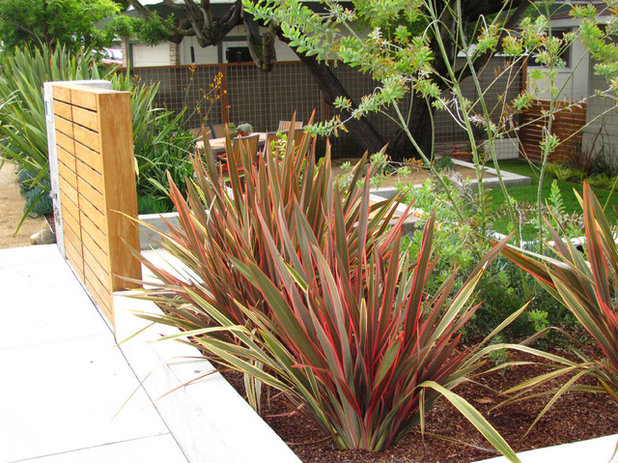
Shades Of Green Landscape Architecture
Botanical name: Phormium cultivars and hybrids
Common name: New Zealand flax
USDA zones: 8 to 11 (find your zone)
Water requirement: Little to moderate
Sun requirement: Full sun to partial shade
Mature size: 1 to 9 feet tall and wide, depending on species
Benefits and tolerances: Tolerant of coastal conditions, soil and wind
Seasonal interest: Year-round foliage; flowers in spring or summer
When to plant: Late spring or summer
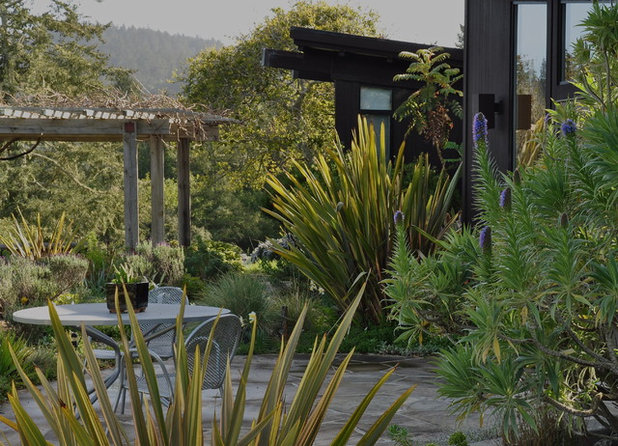
Brian Maloney Design Associates
Distinguishing traits. Flaxes
are defined by rigid leaves of a considerable size, reaching heights of up to 9 feet. Primarily upright, the leaves droop slightly at the tips and clump to epic proportions. Erect flowers emerge in summer or spring, but it's the foliage that provides most interest.
Shown: Phormium 'Wings of Gold' with
Echium fastuosum
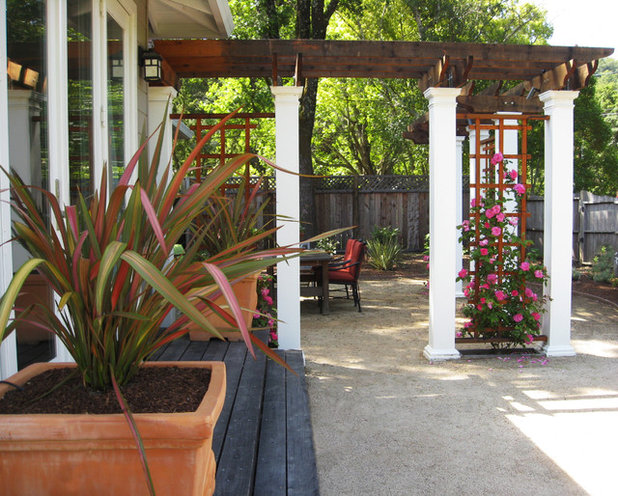
Dig Your Garden Landscape Design
Colorful and variegated varieties of
Phormium tenax as well as hybrids created with another Phormium,
Phormium cookanium, have revived and reinvigorated flax's popularity. While
P. tenax is more of an upright plant and
P. cookanium arches heavily, hybrids can fall anywhere in between.
Shown: Phormium 'Jester'
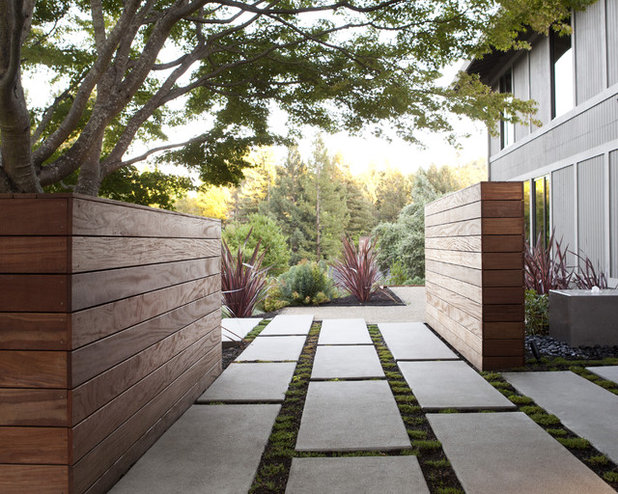
Shades Of Green Landscape Architecture
How to use it. New Zealand flax functions like an ornamental grass on steroids — it’s a garden focal point to the extreme. It has a commanding presence in the garden and should be planted with that in mind. Surround flax with grasses, plant it in containers or even showcase it alongside pools and water features à la Thomas Church.
Phormium's tolerance of sea-coast conditions and wind makes it an excellent windbreak solution, especially along the coast.
Shown: Phormium 'Firebird'
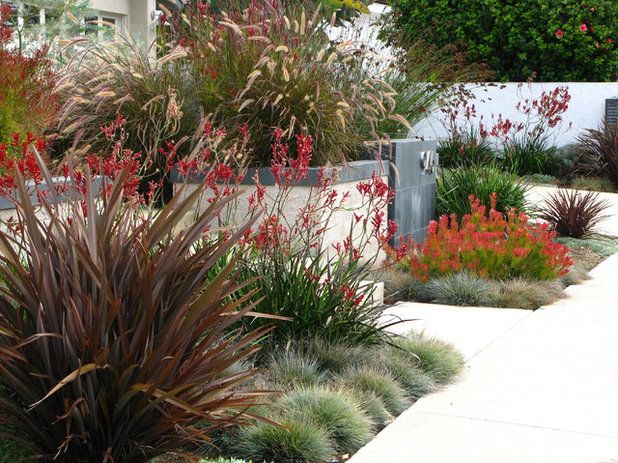
debora carl landscape design
Planting notes. Yet another New Zealand native that's resilient and easy to grow, flax can survive in most situations that typically would be botanical deal breakers, like poor soil conditions, wind and salt. It will grow in full sun or partial shade. It is susceptible to rot, however, if the soil doesn't drain well enough.
Temperatures much below 20 degrees Fahrenheit can cause the plant to die off — if you are on the cusp, try planting it in a garden spot that will receive more protection. Cool weather and full sun intensify its color. Be sure to remove spent foliage and flowers.
Shown: Phormium 'Amazing Red'





